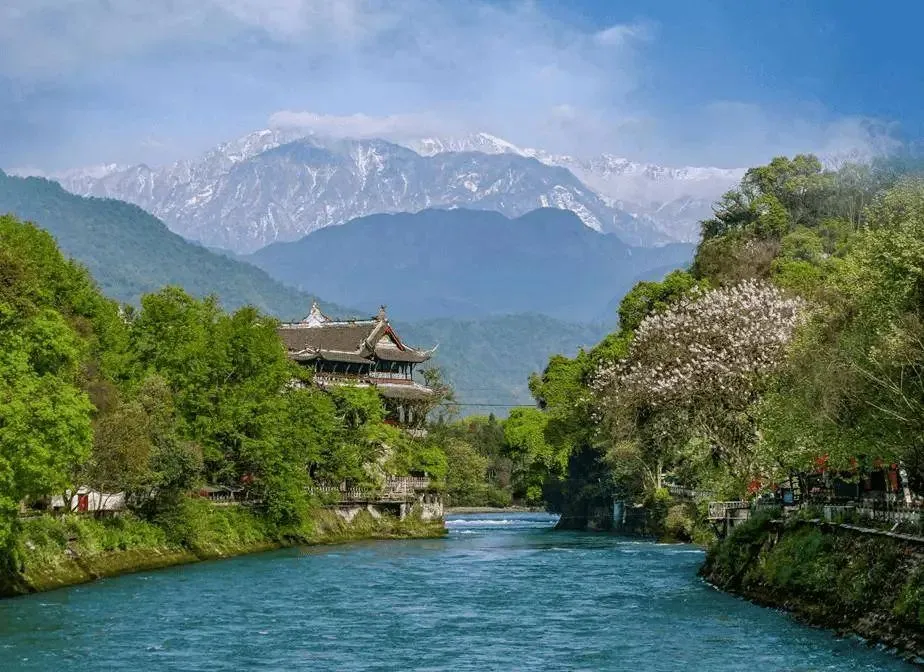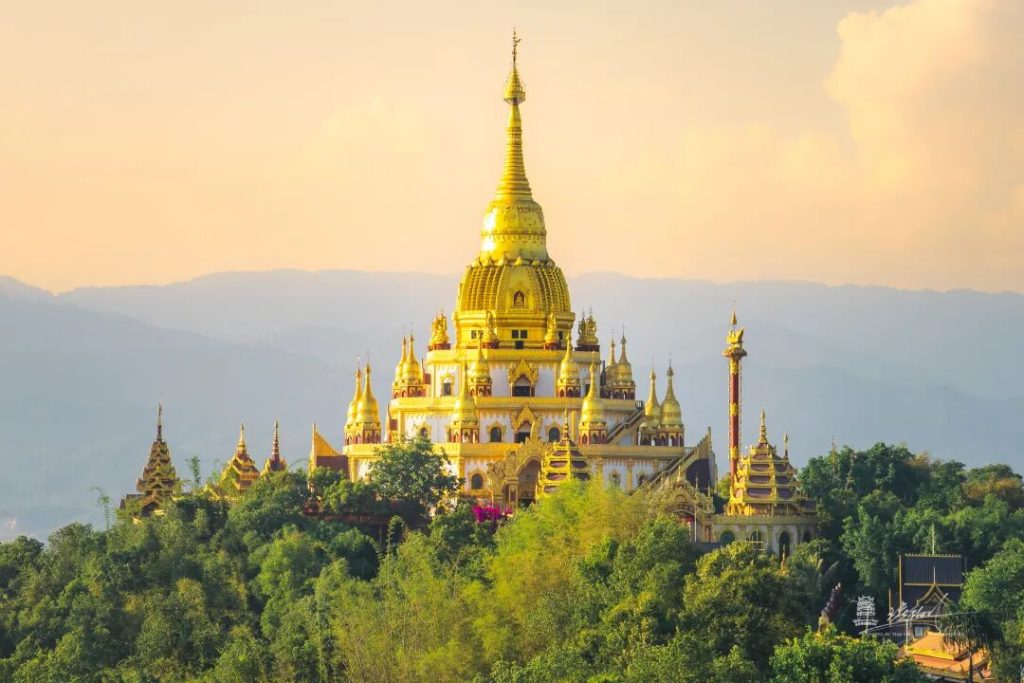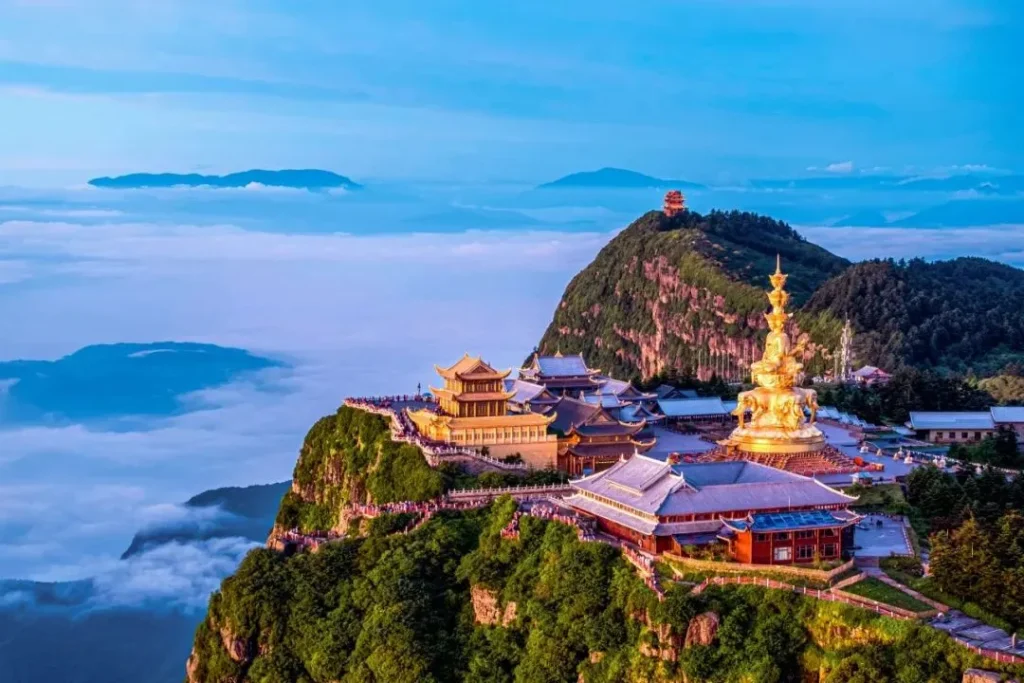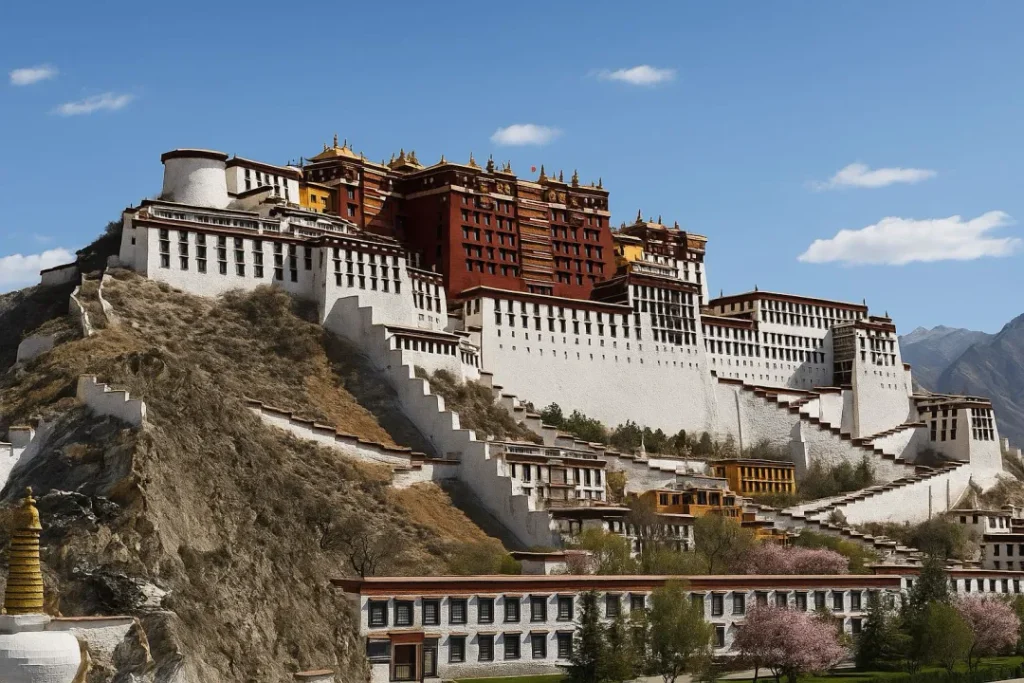Welcome to Jiuzhaigou National Park (九寨沟), a stunning UNESCO World Heritage site in China’s Sichuan province that truly lives up to its nicknames: “Fairytale World” and “Heaven on Earth.” As one of the most beautiful places in China, its breathtaking landscapes and rich Tibetan culture capture the hearts of travelers from all over the globe. Its name, which means “Nine Village Valley,” comes from the nine Tibetan villages scattered throughout the park. Here, crystal-clear lakes, cascading waterfalls, vibrant forests, and snow-capped peaks create a dreamlike scene, while the Tibetan people who have lived here for generations add a unique cultural soul to the place. This guide will walk you through Jiuzhaigou’s natural wonders, the best time to visit China’s jewel, practical travel tips, and what to look out for, so you can plan ahead and fully enjoy this feast for the eyes and soul, a highlight of any China tour.
- Jiuzhaigou: Nature's Masterpiece
- When's the Best Time to Visit? A Guide to Jiuzhaigou's Seasons
- Your Practical Guide to Visiting Jiuzhaigou
- Exploring the Park: Valleys and Highlights
- More Practical Tips
- Beyond Jiuzhaigou: Extending Your West Sichuan Adventure
- In Conclusion: The Endless Charm of Jiuzhaigou
Jiuzhaigou: Nature’s Masterpiece

Located about 400 kilometers from Chengdu, the capital of Sichuan, Jiuzhaigou is nestled in the Min Mountains. The valley itself is a high-altitude wonderland, with the entrance at just 2,000 meters and the surrounding peaks soaring above 4,000 meters. The nine Tibetan villages (九个藏族村寨) live in harmony with nature, their homes dotting the landscape.

The geography here has created something truly special. Jiuzhaigou is a network of valleys filled with pristine forests, turquoise lakes, and spectacular waterfalls connected by travertine-laced streams. It’s not just a pretty place; it’s China’s first nature reserve established primarily to protect its scenic beauty, and it’s recognized globally for its ecological importance, a prime example of China nature at its finest.
What really makes Jiuzhaigou famous is its water. There’s a saying: “Once you’ve seen the waters of Jiuzhaigou, no other water is worth seeing.” The park has 108 ‘haizi’ (海子), the Tibetan word for lakes. These lakes are crystal clear, but their colors are constantly changing—from emerald green and turquoise blue to golden yellow and deep indigo. This magical effect is caused by calcium carbonate deposits, creating a landscape of colorful travertine pools that are incredibly rare worldwide.

Beyond the water, the forests are just as stunning. In the fall, the mountainsides burst into a riot of gold and fiery red, reflecting perfectly in the blue-green lakes. In winter, Jiuzhaigou transforms into a silent, snow-covered paradise. The waterfalls freeze into magnificent ice sculptures, and the frozen lakes create mesmerizing patterns. No matter the season, Jiuzhaigou has a unique charm waiting to be discovered.
When’s the Best Time to Visit? A Guide to Jiuzhaigou’s Seasons




Jiuzhaigou’s beauty changes with the seasons, so picking the right time to visit depends on what you want to see. The Jiuzhaigou weather is a key factor in planning your trip.
- Spring (April – June): This is when the valley awakens. The ice melts, wildflowers bloom, and the forests turn a vibrant green. It’s a quieter time to visit, perfect for enjoying the peaceful side of Jiuzhaigou. Just a heads-up, some of the smaller lakes might have lower water levels during this dry season.
- Summer (July – August): Summer is the best time to see Jiuzhaigou’s water at its most brilliant. The lakes are full and intensely blue, and the waterfalls are at their most powerful. It’s a great escape from the summer heat, but it’s also peak tourist season, so be sure to book everything in advance.
- Autumn (September – November): Autumn is widely considered the most beautiful season in Jiuzhaigou. The forests explode in a kaleidoscope of red, orange, and yellow, creating a stunning contrast with the turquoise lakes. Mid-October to early November is the absolute best time for photography. The sky is clear, the colors are at their peak, and the whole valley looks like a painting.
- Winter (December – March): Winter offers a completely different, serene experience. The crowds are gone, and the landscape is covered in a blanket of snow. The frozen waterfalls and icy lakes are incredibly beautiful and peaceful. Plus, entrance tickets are cheaper during the off-season!
The verdict? Autumn is the ultimate showstopper. But honestly, every season in Jiuzhaigou has its own magic.
Your Practical Guide to Visiting Jiuzhaigou
Getting your logistics sorted is key to a smooth trip. Here’s what you need to know for your trip to China.
Getting There:
Most international travelers fly into Chengdu (CTU airport) first. From there, you have a few options:

- Fly: The quickest way is to take a one-hour flight from Chengdu to Jiuzhai Huanglong Airport (JZH). From the airport, it’s about a 2-hour bus or taxi ride to the park entrance.

- High-Speed Train: A high-speed train from Chengdu to Huanglong-Jiuzhai Station recently opened, cutting the journey to just over an hour. From the station, it’s a 2-hour drive to the park.
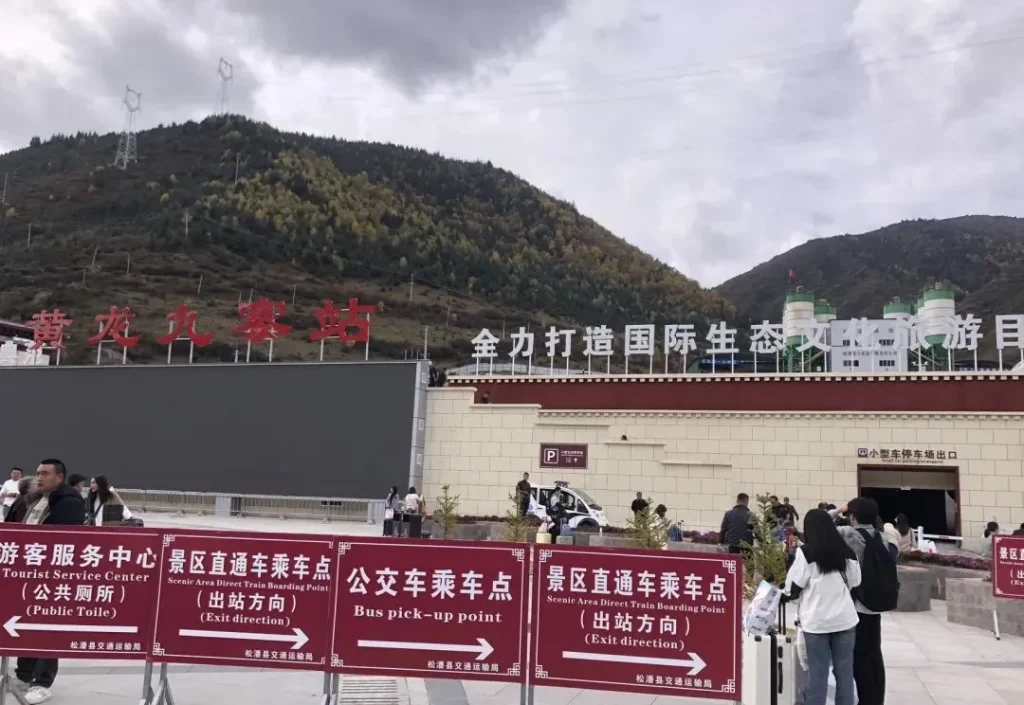
- Bus: The most budget-friendly option is a long-distance bus from Chengdu, which takes about 8-10 hours. It’s a scenic ride, but a long one.
- Drive or Charter a Car: For the most flexibility, you can drive or hire a car. The route from Chengdu is about 400 km and takes you through beautiful mountain scenery.
Tickets and Booking:
Jiuzhaigou uses a real-name reservation system, so you must book your tickets online in advance, especially during peak season. You can do this through their official WeChat account (“九寨沟”) or the Aba Tourism website. The park has a daily limit on visitors, so book at least a week or two ahead.
- Peak Season (April 1 – Nov 15): 190 RMB (ticket) + 90 RMB (sightseeing bus)
- Off-Season (Nov 16 – March 31): 80 RMB (ticket) + 80 RMB (sightseeing bus)
The sightseeing bus is mandatory and totally worth it—the park is huge!
Where to Stay:

- Near the Park Entrance: This is the most convenient area, with a wide range of hotels from budget to luxury. You’ll be right at the doorstep of the park.

- Inside a Tibetan Village: For a more authentic experience, consider staying in one of the Tibetan villages like Shuzheng Zhai (树正寨). The accommodation is simpler, but you’ll get a real taste of local life and culture.

- In Chengdu: If you have more time, you can base yourself in Chengdu and take a multi-day trip to Jiuzhaigou, enjoying city sights like the Chengdu Panda Base before or after.
Exploring the Park: Valleys and Highlights
Jiuzhaigou is made up of three main valleys: Shuzheng, Rize, and Zechawa. The park’s sightseeing bus system is designed to help you navigate them easily.



- Shuzheng Valley (树正沟): This is the valley you enter first. It’s home to about 40% of the park’s lakes, including the stunning Shuzheng Lakes (树正群海), a cluster of 19 terraced lakes. Don’t miss the Nuorilang Waterfall, one of the park’s most iconic sights.

- Rize Valley (日则沟): Many say this is the most beautiful part of Jiuzhaigou. It’s where you’ll find the famous Five Flower Lake (五花海), a shallow lake with a kaleidoscope of colors, and the majestic Pearl Shoal Waterfall (珍珠滩瀑布), which looks like a curtain of cascading pearls.


- Zechawa Valley (则查洼沟): This is the longest and highest valley. Its main attractions are the Long Lake (长海), the largest and deepest lake in Jiuzhaigou, and the Five-Color Pond (五彩池), a small but intensely colored pool that looks like a sapphire dropped in the forest.
Suggested Itinerary (1 Day): Take the bus to the end of Rize Valley first and work your way down, hitting all the major spots. After lunch at the Nuorilang Center, take the bus up Zechawa Valley to see Long Lake and Five-Color Pond. Finish your day by exploring Shuzheng Valley on your way back to the entrance.
Immerse Yourself in Tibetan Culture

Jiuzhaigou is more than just pretty landscapes. It’s a living cultural hub.
- Visit a Tibetan Village: Wander through villages like Shuzheng Zhai (树正寨) to see traditional architecture and get a feel for daily life.

- Try Tibetan Food: Don’t leave without trying local specialties like yak butter tea (酥油茶), zanba (糌粑, roasted barley flour), and yak meat hotpot. This is a key part of the Sichuan experience.

- Watch a Cultural Show: In the evening, you can catch a Tibetan song and dance performance. It’s a vibrant and energetic showcase of local culture.

- Explore Zharu Monastery (扎如寺): This is the only Bon religious temple in Jiuzhaigou and offers a peaceful, spiritual experience away from the main tourist trails.
Important Tips for Your Trip
- Altitude Sickness: Jiuzhaigou is at a high altitude. Take it easy on your first day, drink plenty of water, and avoid strenuous activity. If you’re concerned, talk to your doctor about medication before you go.
- Dress in Layers: The weather can change quickly, and there’s a big temperature drop between day and night. Bring warm clothes, even in summer.
- Wear Comfortable Shoes: You’ll be doing a lot of walking. Good, sturdy shoes are a must. Make them non-slip if you’re visiting in winter.
- Sun Protection: The sun is strong at high altitudes. Bring sunscreen, a hat, and sunglasses.

- Respect the Environment: Jiuzhaigou is a fragile ecosystem. Stay on the designated paths, don’t feed the wildlife, and don’t smoke in non-smoking areas. Help keep this fairytale world beautiful for everyone.
More Practical Tips
- Travel Off-Peak: To have a better experience, try to avoid Chinese national holidays like Golden Week China (early October), May Day (early May), and the summer school holidays. The park is much quieter during the off-season or on weekdays, letting you enjoy the scenery in peace.
- Plan Ahead: Remember, Jiuzhaigou limits the number of daily visitors (41,000 in peak season, 23,000 in off-season). Always book your tickets in advance, especially during busy times. A week or two ahead should be safe.
- Cash and Connectivity: While mobile payments are common in China, some smaller vendors in the park might only accept cash, so it’s a good idea to carry some with you. You’ll have a phone signal in most of the main areas, but it can get spotty in more remote parts of the valleys.
- Cultural Respect: Be respectful of the local Tibetan customs and beliefs. A little courtesy goes a long way. When shopping, it’s wise to listen to your guide’s advice to avoid any misunderstandings.
- Entertainment: There isn’t a huge amount of nightlife around Jiuzhaigou. Consider building some cultural experiences in Chengdu into your itinerary, like visiting the Kuanzhai Alleys (宽窄巷子) or Jinli Ancient Street (锦里古街), to round out your trip.
By keeping these China tips in mind, you can fully enjoy the beauty and tranquility of Jiuzhaigou while also helping to protect this precious natural treasure.
Beyond Jiuzhaigou: Extending Your West Sichuan Adventure
While Jiuzhaigou is a showstopper, there’s so much more to see in northwestern Sichuan. If you have extra time, think about weaving Jiuzhaigou into a larger West Sichuan loop to experience even more diverse landscapes and cultures. Many China tour packages offer this option.
Huanglong National Park: The Ultimate Travertine Landscape

Just 50 kilometers from Jiuzhaigou lies its sister park, Huanglong, famous for its vast, colorful travertine pools. Known as the “Fairy Land on Earth” (人间瑶池), its most famous feature is the Five-Color Pond, a series of terraced pools that shimmer with shades of blue, green, and yellow, like a painter’s palette. With over 3,400 travertine pools, Huanglong’s scale and beauty are truly world-class. A day trip from Jiuzhaigou is perfect for experiencing this different but equally stunning landscape.
Mount Emei and the Leshan Giant Buddha: A Mix of Nature and Culture

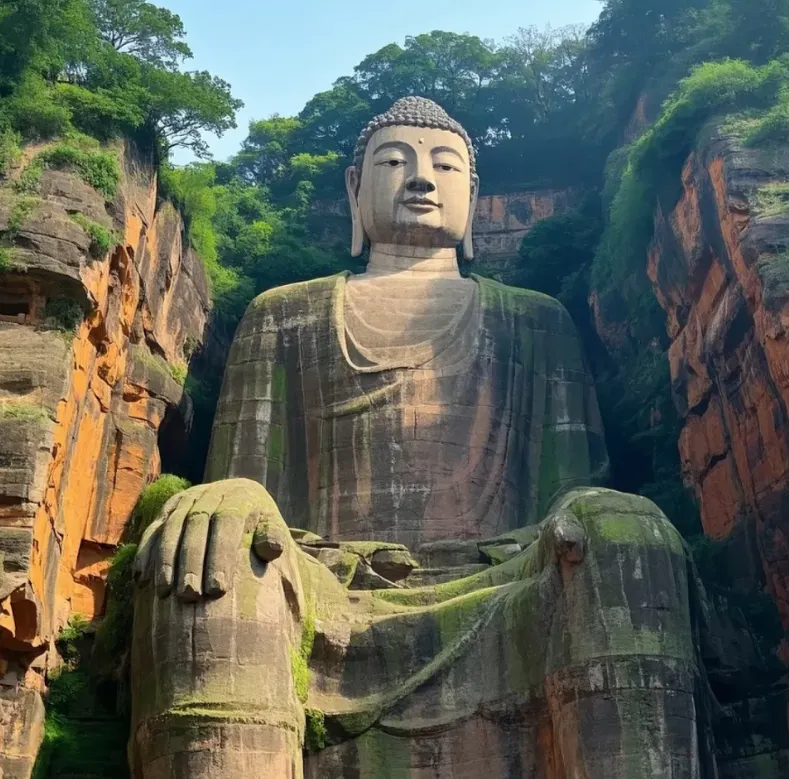
If your journey takes you back towards the Sichuan Basin, don’t miss Mount Emei and the Leshan Giant Buddha. Mount Emei is one of China’s four sacred Buddhist mountains, known for its breathtaking scenery and deep spiritual history. The sea of clouds at the Golden Summit is a must-see. Nearby, the Leshan Giant Buddha, a colossal 71-meter-high stone statue carved into a cliffside, watches over the confluence of three rivers. It’s the largest stone Buddha in the world. Combining these sites with Jiuzhaigou offers a wonderful blend of natural wonders and human history.
The West Sichuan Loop: Jiuzhaigou, Huanglong, and the Ruoergai Grassland

For a taste of the vast Tibetan plateau, consider a loop that includes Jiuzhaigou, Huanglong, and the Ruoergai Grassland. As China’s second-largest grassland, Ruoergai is a wide-open expanse of green pastures dotted with grazing yaks and sheep in the summer. It’s a paradise for photographers, with stunning sights like the Flower Lake and the First Bend of the Yellow River.
Chengdu: The Perfect Start and End Point

Chengdu is the gateway to Jiuzhaigou and a fantastic city to explore in its own right. Spend a few days visiting the Giant Panda Breeding Research Base to see the famous red panda pictures come to life, the Kuanzhai Alleys (宽窄巷子), Jinli Ancient Street (锦里古街), and the Wuhou Shrine (武侯祠). And, of course, you can’t leave without trying the amazing Sichuan food, from spicy hotpot (火锅) and street-side skewers (串串香) to delicious Dan Dan Noodles (担担面).
By planning your trip thoughtfully, you can experience the best of Sichuan’s natural and cultural beauty, making your visit to Jiuzhaigou an even more unforgettable adventure.
In Conclusion: The Endless Charm of Jiuzhaigou
Jiuzhaigou’s unique natural beauty and rich cultural heritage draw visitors from all over the globe. Whether it’s the blooming flowers of spring, the lush greens of summer, the fiery colors of autumn, or the serene snowscapes of winter, the park offers a different kind of magic in every season. With the right planning, your trip to this fairytale world will be smooth, enjoyable, and truly unforgettable. We hope this guide helps you plan your dream journey to one of the top places to visit in China!
Enjoy your trip to Jiuzhaigou! It’s a place that will stay with you long after you’ve left.

